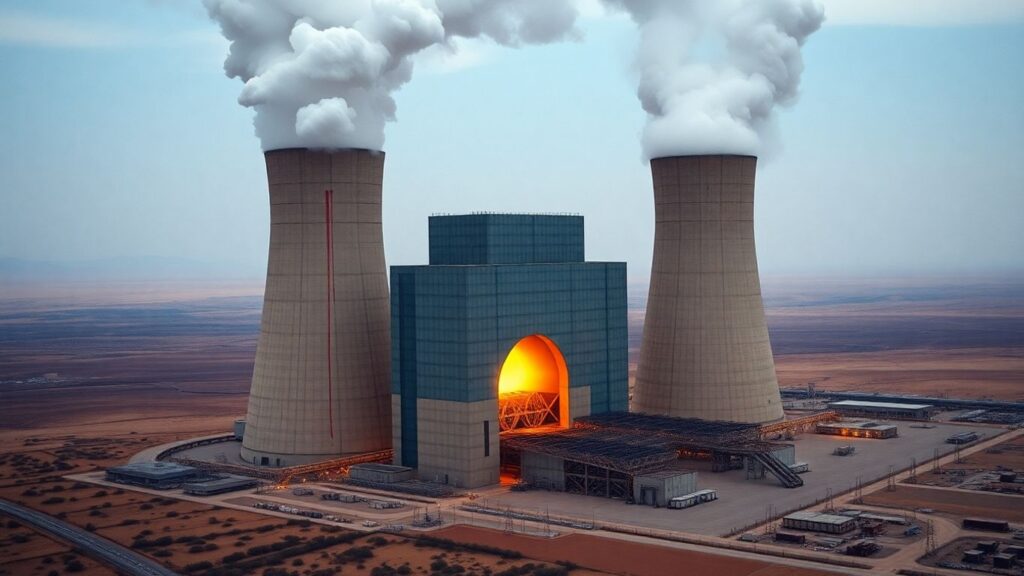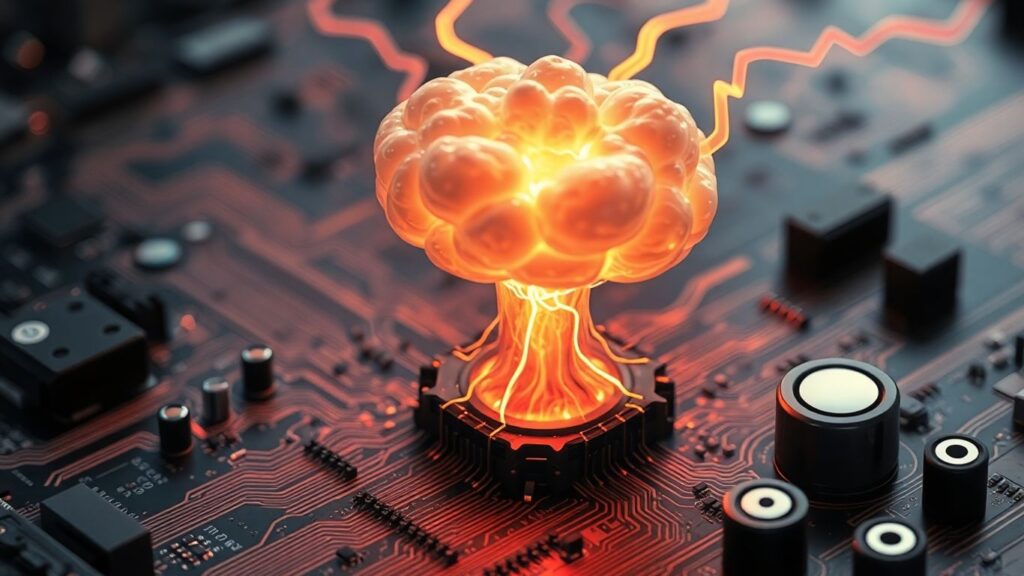The rapid advancement of artificial intelligence is creating an unprecedented demand for electricity, prompting major technology companies to explore and invest in nuclear power as a potential solution. This surge in interest marks a significant shift, as tech giants seek reliable, low-emission energy sources to fuel their data centers and meet ambitious climate goals.
Key Takeaways
- AI’s energy consumption is skyrocketing, potentially increasing global data center power demand by 165% by 2030.
- Tech companies like Google, Amazon, and Microsoft are making significant investments and power purchase agreements with nuclear energy developers.
- Small Modular Reactors (SMRs) are a key focus for next-generation nuclear technology, promising faster deployment and lower costs.
- Challenges remain, including the long lead times for building new plants and the need for regulatory approvals.
The AI Energy Conundrum
The exponential growth of AI, powering everything from chatbots to complex simulations, requires vast amounts of energy. Projections indicate that data centers alone could consume electricity equivalent to the entire demand of Mexico by 2030. This escalating need puts immense pressure on existing power grids and climate commitments.
Tech companies, driven by their own net-zero targets, are actively seeking stable, carbon-free energy sources. Nuclear power, with its ability to provide constant, firm energy, is emerging as a compelling option, contrasting with the intermittent nature of renewables like solar and wind.
Big Tech’s Nuclear Investments
Major players in the tech industry are making substantial moves in the nuclear sector. Google has signed a long-term power purchase agreement with Kairos Power, a company developing advanced molten-salt-cooled reactors. Amazon has invested in X-energy, a startup focused on smaller, more standardized reactors, and has a deal to purchase power from an X-energy SMR project in Washington state.
Microsoft has also entered the fray with a power purchase agreement with Constellation, aiming to secure electricity from a potentially reopened nuclear plant. These partnerships aim to provide guaranteed customers for nuclear facilities, helping to keep existing plants operational and advance new technologies.
The Promise and Peril of New Nuclear Technologies
Much of the current excitement centers on Small Modular Reactors (SMRs). These next-generation designs are envisioned as being smaller, more efficient, and quicker to build than traditional large-scale plants. Companies like Kairos Power and X-energy are at the forefront of this development, receiving regulatory attention and significant private investment.
However, the timeline for deploying these advanced technologies remains a significant hurdle. Many SMR designs are still in the conceptual or demonstration phases, with commercial deployment not expected until the early 2030s. This timing mismatch means that while tech companies tout nuclear solutions, they will likely continue to rely on fossil fuels in the interim.
Navigating the Challenges
Despite the renewed interest, significant obstacles persist. Building new nuclear plants, even SMRs, can take close to a decade, a timeline that may not align with the immediate energy needs of rapidly expanding AI infrastructure. Regulatory approvals, high construction costs, and public perception also present challenges.
In California, a long-standing moratorium on new nuclear plant construction is being re-examined in light of AI’s energy demands. While some lawmakers are pushing for exemptions for SMRs, significant regulatory and political hurdles remain.
Ultimately, experts suggest that no single energy source will meet the burgeoning demand. A diverse portfolio including renewables, energy storage, and nuclear power will likely be necessary to balance energy needs with climate goals.












